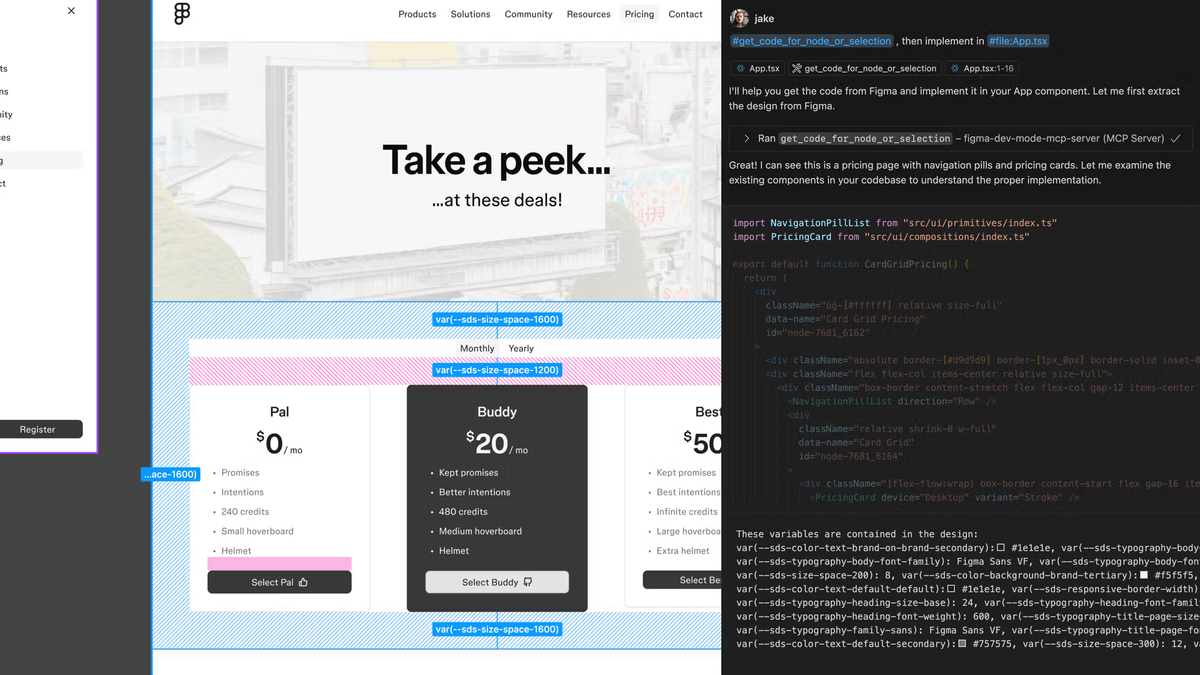Better Design Outcomes with Figma and AI
Figma’s MCP server, paired with AI tools like Roo Code and Cursor, is transforming how design decisions reach production.

Designers don’t need to code, but they do need to understand how design decisions reach production.
AI tools like Roo Code and Cursor, combined with Figma’s new MCP server, are making that journey shorter and clearer. These integrations are small but meaningful steps toward tighter collaboration and higher fidelity execution.
Figma's MCP Server: A Quietly Powerful Feature
Figma’s Model Context Protocol (MCP) server exposes structured design data—like component trees, tokens, and properties—through a simple endpoint. This allows external tools to read what’s on the canvas in real time. More than that it allows conversations with the canvas and code generation based on its attributes.
Why More Products Should Offer an MCP
MCP servers represent a strategic opportunity for SaaS platforms to expose their internal state and data in a structured way. Rather than requiring users to engage through rigid UIs or product-specific chatbots, open protocols like MCP enable flexible, AI-native interactions.
Imagine asking a bank: "How could I have saved more money this month?" Or querying a project tool: "Which tasks blocked progress last quarter?". They take the common API and integration mechanic to a whole new level with the conversational and contextual abilities of LLMs.
They can also expose Tool calls so actions can be performed by the AI Agents so your AI of choice can make suggestions and implement changes as a result.
Products that offer an MCP interface make themselves not just tools, but intelligent platforms that adapt to user questions and workflows.
Enabling Figma's MCP Server in Coding Tools
To connect this to Roo Code or Cursor, add the following configuration:
{
"mcpServers": {
"Figma": {
"url": "http://127.0.0.1:3845/sse"
}
}
}This snippet can be added to ~/.roo/mcp.json or ~/.cursor/config.json, depending on the tool in use. Once active, these environments can surface context-aware information pulled directly from the Figma file.
Why It Matters for Designers and Engineers
With conversational, agentic access to structured data from the MCP server, it becomes feasible to simply ask tools to implement components and know that they will match design specifications—including naming conventions, layout rules, and token usage. This kind of automation reduces manual review time improving both accuracy and speed in implementation.
Small Steps, Tangible Gains
Adopting tools like MCP, Roo Code, and Cursor isn’t about chasing trends. It’s about making good work easier to ship. As the boundary between design and development continues to shrink, lightweight integrations like this help ensure the integrity of both craft and execution.
Better outcomes start with better connections. And now, those connections are only a config file away.
